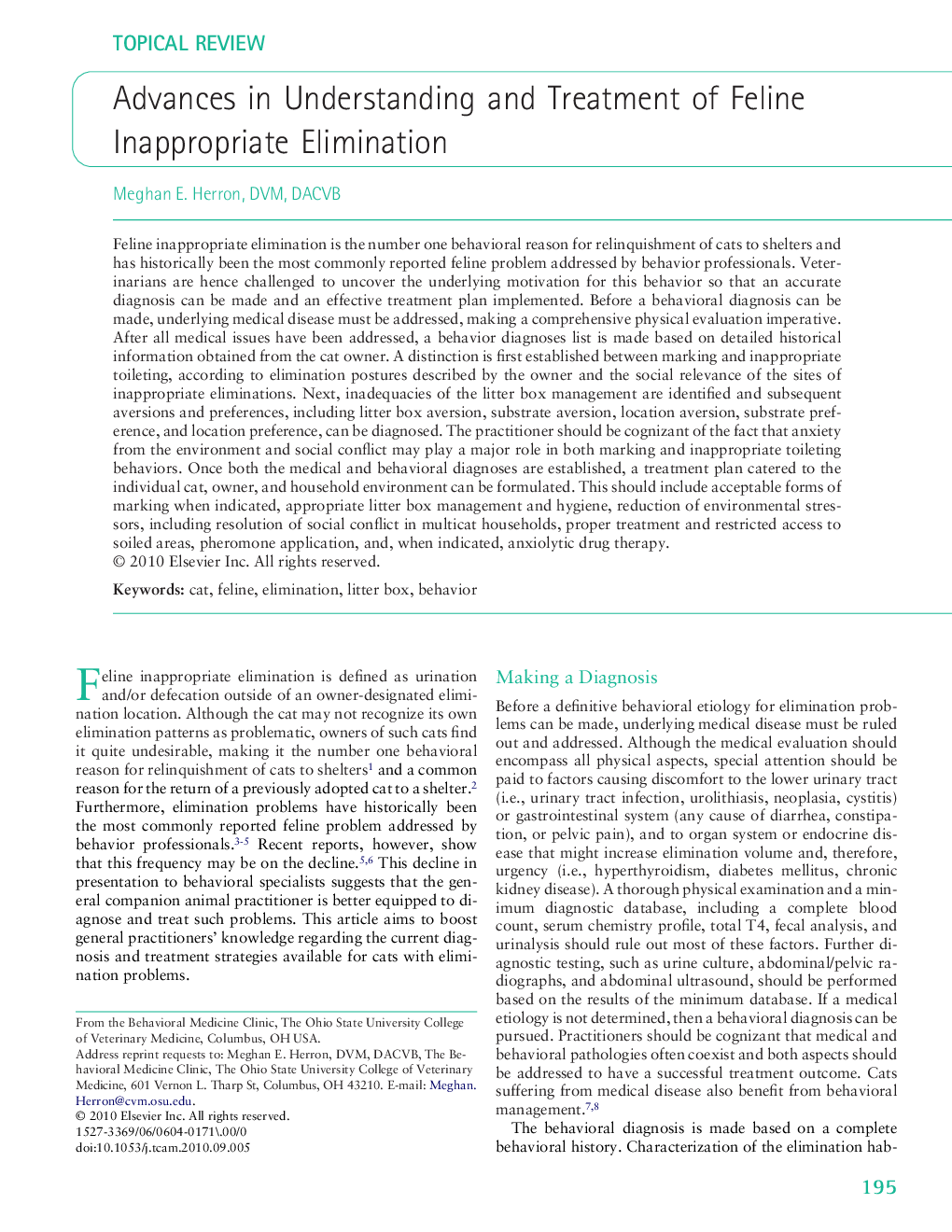| Article ID | Journal | Published Year | Pages | File Type |
|---|---|---|---|---|
| 2401148 | Topics in Companion Animal Medicine | 2010 | 8 Pages |
Feline inappropriate elimination is the number one behavioral reason for relinquishment of cats to shelters and has historically been the most commonly reported feline problem addressed by behavior professionals. Veterinarians are hence challenged to uncover the underlying motivation for this behavior so that an accurate diagnosis can be made and an effective treatment plan implemented. Before a behavioral diagnosis can be made, underlying medical disease must be addressed, making a comprehensive physical evaluation imperative. After all medical issues have been addressed, a behavior diagnoses list is made based on detailed historical information obtained from the cat owner. A distinction is first established between marking and inappropriate toileting, according to elimination postures described by the owner and the social relevance of the sites of inappropriate eliminations. Next, inadequacies of the litter box management are identified and subsequent aversions and preferences, including litter box aversion, substrate aversion, location aversion, substrate preference, and location preference, can be diagnosed. The practitioner should be cognizant of the fact that anxiety from the environment and social conflict may play a major role in both marking and inappropriate toileting behaviors. Once both the medical and behavioral diagnoses are established, a treatment plan catered to the individual cat, owner, and household environment can be formulated. This should include acceptable forms of marking when indicated, appropriate litter box management and hygiene, reduction of environmental stressors, including resolution of social conflict in multicat households, proper treatment and restricted access to soiled areas, pheromone application, and, when indicated, anxiolytic drug therapy.
